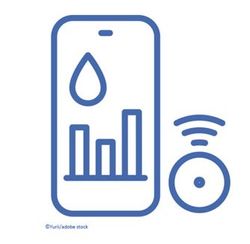Proactive Intervention: Strategies for Slowing Type 1 Diabetes Progression - Episode 6
Who Should We Screen for T1D?
Panelists discuss screening for T1D for individuals at higher risk, such as those with a family history of T1D, autoimmune conditions, or certain genetic markers, to identify early signs of the disease and enable timely intervention.
The following Frontline Insights transcript has been edited for clarity and length.
Javier Morales, MD: Natalie, let’s begin with a fundamental question: Who should we screen for type 1 diabetes?
Natalie Bellini, DNP, FNP-BC, BC-ADM, CDCES: According to the American Diabetes Association (ADA) and the International Society for Pediatric and Adolescent Diabetes (ISPAD), screening is recommended for individuals with a personal history of autoimmune conditions, such as thyroiditis (e.g., Hashimoto’s thyroiditis or Graves’ disease) or celiac disease and of course, first-degree relatives of individuals with type 1 diabetes, including parents, siblings, and children.
Additionally, type 1 diabetes prevalence is increasing, particularly among non-Hispanic White, Black, and Hispanic populations, with the latter two groups experiencing the fastest growth rates. While over 50 genes are implicated in type 1 diabetes, certain HLA genotypes play a significant role. However, these genotypes are currently only identified in research settings—they aren’t yet available through routine clinical labs like those using systems such as Epic. This highlights the importance of supporting research efforts to improve diagnostic capabilities.
Timing and Frequency of Screening
In terms of timing and frequency of screening in children, the recommended ages are between 2–3 years, 5–6 years, and 9–11 years.
Autoantibodies can wax and wane, necessitating repeated testing during childhood. Importantly, screening isn’t limited to children. Adults with a first-degree relative diagnosed with type 1 diabetes, regardless of age, should also undergo testing.
The frequency of screening depends on the individual’s risk profile. For example, a person with one first-degree relative with type 1 diabetes and additional autoimmune conditions (e.g., Hashimoto’s thyroiditis or rheumatoid arthritis) might be screened annually, often during routine blood work like a lipid panel. Integrating screening into existing workflows can simplify the process and reduce barriers.
Morales: Thank you for explaining the nuances of screening. Now, a question for the audience: How familiar are you with the concept of antibody levels serving as biomarkers for disease progression and treatment response in type 1 diabetes? Please select your answer.
Natalie, do antibody levels truly matter when monitoring disease progression?
Bellini: That’s an excellent question. While high antibody levels don’t necessarily indicate more severe disease, they do reflect the immune system’s activity against beta cells. The higher the levels, the more aggressively the immune system is attacking. Conversely, lower levels may suggest slower disease progression. Monitoring antibody levels provides valuable insights into the disease process.
Morales: What specific antibodies are we testing for, and how does this process work in practice?
Bellini: The antibodies commonly tested include GAD65, IA-2, ZnT8, and insulin autoantibodies. In our Epic system, we’ve created a custom order set called "Screen T1," which simplifies the process of ordering these tests. Coding options, such as "family history of type 1 diabetes" or "diabetes screening," ensure appropriate billing.
For patients with high-deductible insurance plans, programs like TrialNet offer free screening for first-degree relatives aged 2–45 years. TrialNet provides options for home testing kits, lab visits, or testing at participating sites. They initially test for two antibodies, and if either is positive, they proceed with all five.
Another option is the Autoimmune Screening for Kids (ASK) program, which recently expanded to include adults. This population-based screening program allows individuals to order test kits online, perform finger-stick tests at home, or visit a lab in Colorado. The ASK program screens for type 1 diabetes antibodies and celiac disease, which frequently co-occurs with type 1 diabetes.
Finally, several online platforms offer antibody testing for around $100, providing another accessible option for patients.
Morales: That’s incredibly helpful, especially given the challenges of pediatric screening. Blood draws can be difficult for these little babies, so finger-stick tests simplify the process and improve compliance. Screening at the recommended ages—2–3, 5–6, and 9–11 years—is vital for early detection and intervention.


